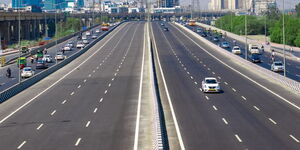Photos showing a contrast of the Lake Nakuru National Park in 2018 and its current situation, have gone viral on social media platforms.
In the photos seen by Kenyans.co.ke, the entrance of the park, which once attracted thousands of tourists both locally and internationally, is now totally submerged in water.
A mysterious situation that has led many Kenyans wondering what could have caused the problem threatening the area's ecosystem and displacing thousands of residents.
"It's terrible. The whole park is technically a lake," a netizen commented.
Nakuru is not the only water body that has unprecedented rise in water levels. Other lakes in the Rift Valley Lakes Baringo, Bogoria, Elementaita, Naivasha, Turkana, Logipi and Solai, are also rising.
Environmentalists and government officials including the North Rift Tourism coordinator William Kimosop have expressed fears that Lake Baringo and alkaline Lake Bogoria could merge causing cross-contamination and threaten wildlife and livelihoods of communities dependent on them.
“It is a disaster we are staring at. We do not know what next will happen when alkaline and freshwater lakes merge," he stated.
Weighing in on the matter, Joseph Edebe, a research scientist at the Kenya Wildlife Service (KWS), stated that the swelling of the lakes had been aggrevated by the high rainfall in the region.
“The increase in water volumes is happening across all lakes in the region from Ethiopia, Sudan [and] Tanzania [to] Uganda. The lakes in these regions are rising to the highest levels because of rainfall, which is above normal, experienced since May last year,” he noted.
Scientists believe that an increase in human population and livelihood-related activities within the catchment areas such as agriculture, settlement and deforestation have encroached the water source areas.
They explain explain that forests act as a sponge that soaks up excess water. Without the forests, the runoff drains into rivers, causing flooding.












